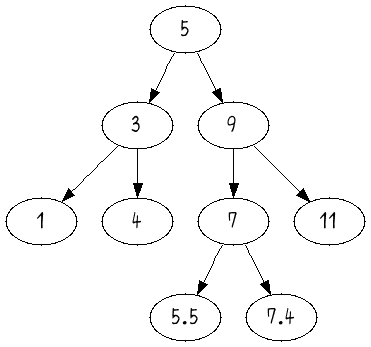若想在不同的資料結構中套用相同的演算法操作資料,往往會使用 iterator pattern。Iterator 的原理很簡單:不同的容器都要實作出具有相同介面的 iterator,把巡訪資料的過程封裝在 iterator 之中,使用者只需要知道如何使用這個共通的 iterator 介面,就可以操作各式各樣結構不同的容器。
傳統的 iterator 實作方法,往往是把巡訪容器時的狀態儲存在某個變數當中。比如說巡訪陣列時,會在 iterator 中儲存陣列的 index;而在巡訪 linked list 時則是儲存其中一個 node。在更複雜的場合--比如說樹狀結構的 iterator 可能要儲存 stack,實作起來就沒那麼簡單了。然而帶有 call stack 的 coroutine 卻可以很漂亮地實做出這種複雜結構的 iterator。
簡介 Lua Function 及 Closure
由於接下來會大量使用 closure,在這邊先為不習慣 functional programming 的讀者做簡單的介紹。
Lua 中的函式屬於 first-class object,它就像數字或字串那樣,你可以把函式存在變數當中、當作參數傳進另一個函式、或是當成其它函式的回傳值。
1 2 3 4 5 6 7 8 9 10 11 12 13 14 15
| local foo = function(n) if n%7 == 0 then print(n .." is dividable by 7.") end end foo(14) function check_between(min, max, checker) for i=min, max do checker(i) end end check_between(10, 100, foo)
|
把函式當作回傳值則頗為微妙,因為這個回傳的函式可以存取上一層的區域變數,比如說以下這個例子:
1 2 3 4 5 6 7 8 9 10 11 12
| function make_counter() local c = 0 return function() c = c + 1 print("c = " .. c) end end local counter = make_counter() counter() counter() counter()
|
若依照一般對 C 語言的認知,區域變數在函式結束後就會消失,因此在回傳的函式中使用它似乎會造成非法記憶體存取。但在 functional programming 之中,編譯器會偵測出這類的外層變數(稱之為 upvalue),並且把它綁在回傳值上。因此在呼叫 counter() 時,c 這個變數就彷彿全域變數般會永久存在,但在 make_counter() 外部卻又看不到。
這樣的語言特性稱之為 closure,而這也是 Lua iterator 的基礎。
Lua 中的 Iterator
Iterator 需要儲存目前巡訪容器的狀態,比如說陣列的 index。C++ 或 Java 這類語言通常把這些狀態包成物件,但 Lua 則是包裝在 closure 之中:
1 2 3 4 5 6 7 8 9 10 11 12 13 14 15 16 17 18 19
| function array_iterator(array) local i = 0 local n = #array return function() i = i + 1 if i <= n then return array[i] else return nil end end end it = array_iterator({1, 1, 2, 3, 5}) local e = it() while e ~= nil do print(e) e = it() end
|
Lua 中的 iterator 是個包含 upvalue 的 closure,每次呼叫時會回傳下一個元素,直到結束時回傳 nil 為止。上述的 while 迴圈看起來不是很直觀,因此 Lua 提供了以下的 syntactic sugar:
1 2 3
| for e in array_iterator({1, 1, 2, 3, 5}) do print(e) end
|
Lua 會自動把它轉化成 while 迴圈的形式。
使用 Coroutine 巡訪陣列
在上一篇 coroutine 的簡介中有提到,coroutine 可以視為「可中斷及繼續執行的函式」,同時又能用 coroutine.yield() 來傳遞資料。因此我們可以把巡訪容器這件事寫成 coroutine,以 yield 來回傳容器中的元素,這麼一來就達成了 iterator 的目標:把巡訪容器與操作元素的邏輯分離開。
使用 coroutine 改寫上述的 array_iterator() 會變成下面這樣子:
1 2 3 4 5 6 7 8 9 10 11 12 13 14 15 16 17 18
| function array_iterator2(array) local function visit() for i=1, #array do coroutine.yield(array[i]) end end local co = coroutine.create(visit) return function() local status, value = coroutine.resume(co) if status then return value else return nil end end end
|
現在這個 iterator 中只夾帶了 co 這個 upvalue。每次在 iterator 前進到下一個元素時,它只是重覆地呼叫 coroutine.resume() 讓 coroutine 往下執行,並取得其中使用 coroutine.yield 所傳回的元素值。
看起來好像比原來的版本更複雜了?我們來試試不同行為的 iterator。
Shuffle Iterator
想像一個特別的 iterator,它同樣會巡訪整個陣列,但卻會先輸出奇數索引上的元素,再輸出偶數索引上的元素。
1 2 3 4
| for e in shuffle_iterator({1, 2, 3, 4, 5, 6}) do print(e) end
|
製作這種 iterator 並不難,只是不太容易讓人理解:
1 2 3 4 5 6 7 8 9 10 11 12 13 14 15 16 17 18
| function shuffle_iterator(array) local i = -1 local n = #array local even_mode = false return function() i = i + 2 if i > n then if even_mode or n < 2 then return nil else i = 2 even_mode = true end end return array[i] end end
|
even_mode 是用來儲存這個 iterator 是否走進了偶數索引區的狀態。儘管這個 iterator 並不難,但若利用 coroutine 會更加直覺:
1 2 3 4 5 6 7 8 9 10 11
| function shuffle_iterator2(array) local function visit() for i=1,#array,2 do coroutine.yield(array[i]) end for i=2,#array,2 do coroutine.yield(array[i]) end end return coroutine.wrap(visit) end
|
我使用了 coroutine.wrap(),這個 Lua 內建函式做的事和我們之前做的一樣:把 coroutine 包裝在 closure 之中,每次呼叫這個 closure 時,都等於呼叫 coroutine.resume()。
使用 coroutine 的寫法,彷彿就只是單純使用迴圈把內容一一印出來,不同的地方只在於把 print() 改成 coroutine.yield() 而已。這也意味著只要我們寫一份把容器內容印出來的程式碼,它就可以馬上改寫成 iterator。
我們來看看更複雜的容器。
二元樹的例子
現在我們的任務是製作二元樹的 iterator,以中序的方式巡訪。Lua 中的二元樹可以用 table 來表示:
1 2 3 4 5 6 7 8 9 10 11 12 13 14 15 16 17
| local binary_tree = { data = 5, left = { data = 3, left = { data = 1 }, right = { data = 4 } }, right = { data = 9, left = { data = 7, left = { data = 5.5 }, right = { data = 7.4} }, right = { data = 11 } } }
|

製作二元樹的 iterator 不算是個簡單 (trivial) 的工作,但前面提到:只要知道怎麼把內容印出來,就可以把這個過程利用 coroutine 轉換成 iterator。所以我們先用看起來最容易的方法,也就是遞迴,來把二元樹印出來:
1 2 3 4 5 6 7 8 9 10 11
| function print_inorder(node) if node.left ~= nil then print_inorder(node.left) end print(node.data) if node.right ~= nil then print_inorder(node.right) end end
|
改成 coroutine iterator 就只是把它照抄一遍:
1 2 3 4 5 6 7 8 9 10 11 12 13 14 15 16 17 18 19 20 21 22 23 24
| function tree_iterator(root) local function visit_inorder(node) if node.left ~= nil then visit_inorder(node.left) end coroutine.yield(node.data) if node.right ~= nil then visit_inorder(node.right) end end return coroutine.wrap( function() visit_inorder(root) end ) end local sum = 0 for e in tree_iterator(binary_tree) do sum = sum + e end
|
如果不使用 coroutine,就相當於把遞迴的演算法改寫成非遞迴的形式,而這樣的改寫通常需要 stack 的協助,而導致結果不易理解。以下是改寫成 iterator 的版本:
1 2 3 4 5 6 7 8 9 10 11 12 13 14 15 16 17 18 19 20 21 22
| function tree_iterator2(root) local node_stack = {} local function push_left_subtree(node) while node ~= nil do table.insert(node_stack, node) node = node.left end end push_left_subtree(root) return function() if #node_stack == 0 then return nil end local node = table.remove(node_stack) push_left_subtree(node.right) return node.data end end
|
使用 coroutine 實作 iterator 具有程式碼簡單易懂的特性,然而這也並非沒有缺點。因為 coroutine 內部保留了 call stack,通常它會比原本的 iterator 占用更多記憶體資源。
在下一篇文章,我會以遊戲 UI 作為範例,介紹 coroutine 的另一個應用方式。
